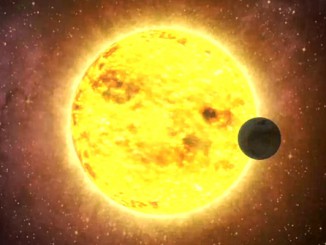
Astronomers have spotted a titanic superflare on a young star and an eruption of blazing-hot plasma amounting to quadrillions of tons of electrically charged particles, a blast 10 times more powerful than any seen before from a Sun-like star.
The powerful coronal mass ejection, or CME, was a reminder that Earth’s Sun may have generated such eruptions in the past, slamming the planet with high-energy radiation, and may do so again in the future. Such CMEs are thought to be relatively infrequent in stars as old as the Sun, but even more modest storms can damage satellites and play havoc with power grids.
“Coronal mass ejections can have a serious impact on Earth and human society,” said Yuta Notsu of the University of Colorado Boulder. “This kind of big mass ejection could, theoretically, also occur on our sun.”
Using NASA’s Transiting Exoplanet Survey Satellite (TESS) and Kyoto University’s SEIMEI Telescope, Notsu, team lead Kosuke Namekata of the National Astronomical Observatory of Japan and other researchers observed the star EK Draconis for 32 nights in 2020.
The star is about the same size as Earth’s Sun, but only about 100 million years old. “It’s what our sun looked like 4.5 billion years ago,” Notsu said.
As luck would have it, the team observed a huge superflare, followed by what appeared to be a huge coronal mass ejection, observing the “filament eruption” phase of the explosion as plasma was blown away into space.
Powerful CMEs may have been much more common during the early years of the solar system, playing a major role in the evolution of planets like Earth and Mars.
“The atmosphere of present-day Mars is very thin compared to Earth’s,” Notsu said. “In the past, we think Mars had a much thicker atmosphere. Coronal mass ejections may help us to understand what happened to the planet over billions of years.”



